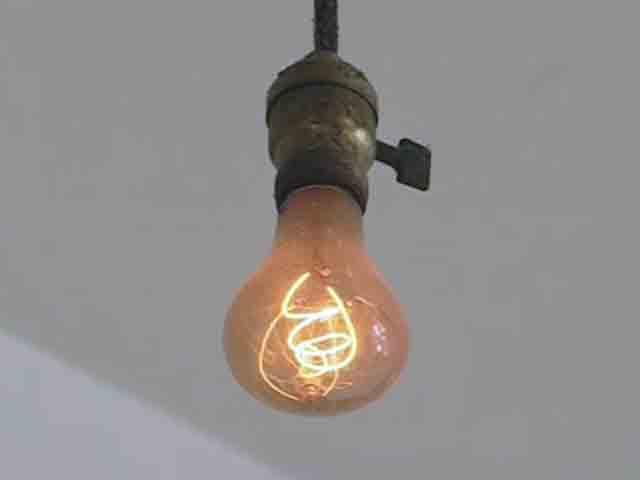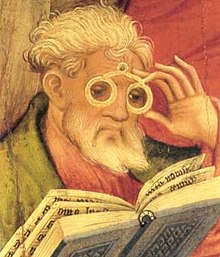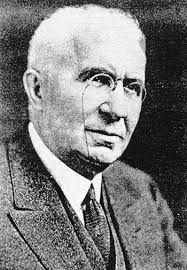1. Wheel

Almost every other great invention that followed seems to have a wheel somewhere as its part. No one knows when the wheel was first invented, but it started life as a potter’s wheel and then it gave mobility to the prehistoric man, and later it helped to run machines and car and cycles and many other items. Today, the automobile can really be considered to be a spin-off from the wheel
2. Aeroplane

The continents would have continued to live in isolation without this means of travel. The world has now become closer and more compact ever since airplanes began flying across water and land.
3. Light bulb

The incandescent light bulb is now being phased out for more energy efficient ones, but from 1879 when it was first used for 13.5 hours by Edison, it has been one of the most used inventions in modern day life. Can you visualise a life without it?
4. Internet

Originally a secret Pentagon project, the Internet has changed the process of knowledge gathering and storing. Communication systems between individuals and corporations are now totally based on the Internet systems. Everyone has easy access to information and the ability to communicate the written word faster. Postal mail has now become ‘snail mail’ and encyclopedias have begun to gather dust in most homes
5. PCs

Computers have changed the way we work and think. Data is now stored in a machine, more than in our mind or in books, and calculations and processes became simpler. Computers were large and cumbersome in the beginning, but now they fit in your pocket and in the palm of your hand. Today they run appliances and space stations, they have assist surgeries and store backend processes, and they make homework easier!
6. Telephone

The telephone definitely deserves to be on this list due to the communication barriers that it broke. The ability to talk to anyone, anywhere at any time is something we value tremendously in our lives and this would not have been possible without a telephone.
7. Penicillin
8. iPhone
9. Flushing toilet
10. Combustion engine
11. Contraceptive pill
12. Washing machine
13. Central heating
14. Fridge
15. Pain killers
16. Steam engine

An invention which has now been phased out and been given the tag of an antique, the Steam Engine made a tremendous impact on our lives while it was there. It made land transport easier, and it spearheaded the Industrial Revolution.
17. Freezer

Refrigeration is the process of removing heat from an enclosed space, or from a substance, to lower its temperature. A refrigerator uses the evaporation of a liquid to absorb heat. The liquid, or refrigerant, used in a refrigerator evaporates at an extremely low temperature, creating freezing temperatures inside the refrigerator. It's all based on the following physics: - a liquid is rapidly vaporized (through compression) - the quickly expanding vapor requires kinetic energy and draws the energy needed from the immediate area - which loses energy and becomes cooler. Cooling caused by the rapid expansion of gases is the primary means of refrigeration today.
18. Camera
The first camera that was small and portable enough to be practical for photography was built by John Strognofe in 1685.

19. Cars

The first self-propelled car was built by Nicolas Cugnot in 1769 which could attain speeds of up to 6 km/hour. In 1771 he again designed another steam-driven engine which ran so fast that it rammed into a wall, recording the world’s first accident.
20. Spectacles
The first eyeglasses were made in Italy at about 1286, according to a sermon delivered on February 23, 1306 by the Dominican friar Giordano da Pisa (ca. 1255 - 1311): "It is not yet twenty years since there was found the art of making eyeglasses, which make for good vision.

21. Mobile phones

Today's communications industry would not be what it is without the contributions made by Richard H. Frenkiel and Joel S. Engel. The big breakthrough came when AT&T Labs researchers Frenkiel and Engel divided wireless communications into a series of cells, then automatically switched callers as they moved so that each cell could be reused. This led to the development of cellular phones and made today’s mobile communications possible.
22. Toilet paper
23. Hoover...Vaccum Cleaners

William Hoover financed additional improvements to Spangler's vacuum cleaner. The Hoover design resembled a bagpipe attached to a cake box, but it worked. William Hoover's company produced the first commercial bag-on-a-stick upright vacuum cleaner. Initial sluggish sales were given a kick by Hoover's innovative 10 day, free home trial, and eventually there was a Hoover vacuum cleaner in nearly every home. By 1919, Hoover cleaners were widely manufactured complete with the "beater bar" to establish the time honoured slogan "It beats as it sweeps as it cleans".
24. Trains

James Watt, a Scottish inventor and mechanical engineer, was responsible for improvements to the steam engine of Thomas Newcomen, hitherto used to pump water out of mines. Watt developed a reciprocating engine, capable of powering a wheel. Although the Watt engine powered cotton mills and a variety of machinery, it was a large stationary engine. It could not be otherwise; the state of boiler technology necessitated the use of low pressure steam acting upon a vacuum in the cylinder, and this mode of operation needed a separate condenser and an air pump. Nevertheless, as the construction of boilers improved, he investigated the use of high pressure steam acting directly upon a piston. This raised the possibility of a smaller engine, that might be used to power a vehicle, and he actually patented a design for a steam locomotive in 1784. His employee William Murdoch produced a working model of a self propelled steam carriage in that year.[18]
25. Google
26. Microwave
27. Email
28. The pen
29. Hot water
30. Shoe
31. Compass
32. Ibuprofen
33. Toothbrush
34. Hair straighteners
35. Laptops
36. Knife and fork
37. Scissors
38. Paper
39. Space travel
40. Kettle
41. Laser

Medical Science owes a lot of its phenomenal progress to the invention of laser. It has made micro- surgery possible, and made CD players and laser printers household items.

Almost every other great invention that followed seems to have a wheel somewhere as its part. No one knows when the wheel was first invented, but it started life as a potter’s wheel and then it gave mobility to the prehistoric man, and later it helped to run machines and car and cycles and many other items. Today, the automobile can really be considered to be a spin-off from the wheel
2. Aeroplane

The continents would have continued to live in isolation without this means of travel. The world has now become closer and more compact ever since airplanes began flying across water and land.
3. Light bulb

The incandescent light bulb is now being phased out for more energy efficient ones, but from 1879 when it was first used for 13.5 hours by Edison, it has been one of the most used inventions in modern day life. Can you visualise a life without it?
4. Internet

Originally a secret Pentagon project, the Internet has changed the process of knowledge gathering and storing. Communication systems between individuals and corporations are now totally based on the Internet systems. Everyone has easy access to information and the ability to communicate the written word faster. Postal mail has now become ‘snail mail’ and encyclopedias have begun to gather dust in most homes
5. PCs

Computers have changed the way we work and think. Data is now stored in a machine, more than in our mind or in books, and calculations and processes became simpler. Computers were large and cumbersome in the beginning, but now they fit in your pocket and in the palm of your hand. Today they run appliances and space stations, they have assist surgeries and store backend processes, and they make homework easier!
6. Telephone

The telephone definitely deserves to be on this list due to the communication barriers that it broke. The ability to talk to anyone, anywhere at any time is something we value tremendously in our lives and this would not have been possible without a telephone.
7. Penicillin
8. iPhone
9. Flushing toilet
10. Combustion engine
11. Contraceptive pill
12. Washing machine
13. Central heating
14. Fridge
15. Pain killers
16. Steam engine

An invention which has now been phased out and been given the tag of an antique, the Steam Engine made a tremendous impact on our lives while it was there. It made land transport easier, and it spearheaded the Industrial Revolution.
17. Freezer

Refrigeration is the process of removing heat from an enclosed space, or from a substance, to lower its temperature. A refrigerator uses the evaporation of a liquid to absorb heat. The liquid, or refrigerant, used in a refrigerator evaporates at an extremely low temperature, creating freezing temperatures inside the refrigerator. It's all based on the following physics: - a liquid is rapidly vaporized (through compression) - the quickly expanding vapor requires kinetic energy and draws the energy needed from the immediate area - which loses energy and becomes cooler. Cooling caused by the rapid expansion of gases is the primary means of refrigeration today.
18. Camera
The first camera that was small and portable enough to be practical for photography was built by John Strognofe in 1685.
19. Cars

The first self-propelled car was built by Nicolas Cugnot in 1769 which could attain speeds of up to 6 km/hour. In 1771 he again designed another steam-driven engine which ran so fast that it rammed into a wall, recording the world’s first accident.
20. Spectacles
The first eyeglasses were made in Italy at about 1286, according to a sermon delivered on February 23, 1306 by the Dominican friar Giordano da Pisa (ca. 1255 - 1311): "It is not yet twenty years since there was found the art of making eyeglasses, which make for good vision.

21. Mobile phones

Today's communications industry would not be what it is without the contributions made by Richard H. Frenkiel and Joel S. Engel. The big breakthrough came when AT&T Labs researchers Frenkiel and Engel divided wireless communications into a series of cells, then automatically switched callers as they moved so that each cell could be reused. This led to the development of cellular phones and made today’s mobile communications possible.
22. Toilet paper
23. Hoover...Vaccum Cleaners
William Hoover financed additional improvements to Spangler's vacuum cleaner. The Hoover design resembled a bagpipe attached to a cake box, but it worked. William Hoover's company produced the first commercial bag-on-a-stick upright vacuum cleaner. Initial sluggish sales were given a kick by Hoover's innovative 10 day, free home trial, and eventually there was a Hoover vacuum cleaner in nearly every home. By 1919, Hoover cleaners were widely manufactured complete with the "beater bar" to establish the time honoured slogan "It beats as it sweeps as it cleans".
24. Trains
James Watt, a Scottish inventor and mechanical engineer, was responsible for improvements to the steam engine of Thomas Newcomen, hitherto used to pump water out of mines. Watt developed a reciprocating engine, capable of powering a wheel. Although the Watt engine powered cotton mills and a variety of machinery, it was a large stationary engine. It could not be otherwise; the state of boiler technology necessitated the use of low pressure steam acting upon a vacuum in the cylinder, and this mode of operation needed a separate condenser and an air pump. Nevertheless, as the construction of boilers improved, he investigated the use of high pressure steam acting directly upon a piston. This raised the possibility of a smaller engine, that might be used to power a vehicle, and he actually patented a design for a steam locomotive in 1784. His employee William Murdoch produced a working model of a self propelled steam carriage in that year.[18]
25. Google
26. Microwave
27. Email
28. The pen
29. Hot water
30. Shoe
31. Compass
32. Ibuprofen
33. Toothbrush
34. Hair straighteners
35. Laptops
36. Knife and fork
37. Scissors
38. Paper
39. Space travel
40. Kettle
41. Laser

Medical Science owes a lot of its phenomenal progress to the invention of laser. It has made micro- surgery possible, and made CD players and laser printers household items.


